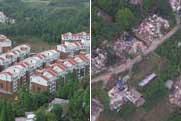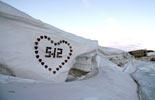China
How Does the 1959 Armed Rebellion Occur?
On February 7, the Dalai Lama took the initiative and said to Deng Shaodong, deputy commander of the Tibet Military Area Command, and other officers, "I was told that after its return from studies in the hinterland, the Song and Dance Ensemble under the Tibet Military Area Command has a very good repetoire. I would like to see its show. Please arrange it for me." Deng and the other officers expressed immediate readiness and asked the Dalai Lama to fix the time and place for performance. They also conveyed the Dalai Lama's wish to Surkang and other Galoins of the Tibetan local government and Paglha Tubdain Weidain, adjutant general of the Dalai Lama. On March 8, the Dalai Lama said he would go to the performance in the Tibet Military Area Command Auditorium at 3 pm on March 10. The Tibet Military Area Command carefully prepared for the occasion. But on the evening of March 9, the Miboin (mayor) of Lhasa provoked citizens by saying: tomorrow the Dalai Lama will go to the Military Area Command for a banquet and a performance; the Hans have prepared a plane to kidnap the Dalai Lama to Beijing; every household should send people to Norbu Lingka, the residence of the Dalai Lama, to petition him not to attend the performance in the Military Area Command. The next morning, the rebels coerced more than 2,000 people to mass at Norbu Lingka, spreading the rumor that "the Military Area Command is planning to poison the Dalai Lama" and shouting slogans such as "Tibetan Independence" and "Away with the Hans." The rebels hit and wounded Sampo Cewang Rinzin, a former Galoin of the Tibetan local government and then a deputy commander of the Tibet Military Area Command. They stoned to death Kainqoin Pagbalha Soinam Gyamco, a progressive patriot and member of the Preparatory Committee for the Tibet Autonomous Region. His body was tied to the tail of a horse and dragged through downtown as a warning. Subsequently, the rebel leaders convened the so-called "people's congress" and "people's conference of the independent state of Tibet," intensifying their efforts to organize and expand armed rebellion. They brazenly tore up the 17-Article Agreement and declared "the independence of Tibet," launching a full-scale armed rebellion against the motherland.Although Norbu Lingka was controlled by the rebels and it was hard to make contact with the Dalai Lama, acting representative of the central government Tan Guansan managed to send three letters to the Dalai Lama on March 10, 11 and 15 through patriots. In them, Tan expressed his understanding of the Dalai Lama's situation as well as his concern for the latter's safety. He pointed out that the rebels were making reckless military provocations and demanded that the Tibetan local government immediately work to stop them. The Dalai Lama penned three letters in reply to Tan on March 11, 12 and 16. In his letters, the Dalai Lama wrote, "Reactionary, evil elements are carrying out activities endangering me under the pretext of ensuring my safety. I am taking measures to calm things down." "The unlawful activities of the reactionary clique cause me endless worry and sorrow.... As to the incidents of yesterday and the day before, which were brought about under the pretext of ensuring my safety and have seriously estranged relations between the central people's government and the local government, I am making every possible effort to deal with them." In the letter of March 16, he said that he had "educated" and "severely criticized" officials of the Tibetan local government. He also expressed the desire to still go to the Military Area Command a few days later. All three letters of the Dalai Lama have been photographed by reporters of the Xinhua News Agency and published, and are still well preserved.
However, on the evening of March 17, Galoins Surkang, Neuxar and Xaisur and other rebel leaders held the Dalai Lama under duress and carried him away from Lhasa to Shannan, the "base" of the armed rebel forces. When the armed rebellion failed, they fled to India.
After the Dalai Lama left Lhasa, about 7,000 rebels gathered to wage a full-scale attack on the Party, government and army institutions before dawn on March 20. The PLA, driven beyond its forbearance, launched under orders a counterattack at 10 am the same day. With the support of patriotic Tibetan monks and lay people, the PLA completely put down the armed rebellion in Lhasa within two days. Before long, the PLA suppressed the armed rebellion in Shannan, where the rebels had been entrenched for a long time. Armed rebel forces who fled to other places were dissolved.
The PLA was highly disciplined in the course of quelling the rebellion and this won the wholehearted support of Buddhist monks and laymen. They took the initiative to help the PLA in putting down the rebellion. Various self-defense, joint-defense, livestock protection and other forms of joint-defense teams sprang up in various places to build roads, provide transport, dispatch mail, serve as guides, boil tea, send water, stand sentry and give first-aid to wounded PLA soldiers, effectively isolating the rebels.
Excerpts from Tibet -- Its Ownership And Human Rights Situation published by Information Office of the State Council of The People's Republic of China
Editor:Du Xiaodan



